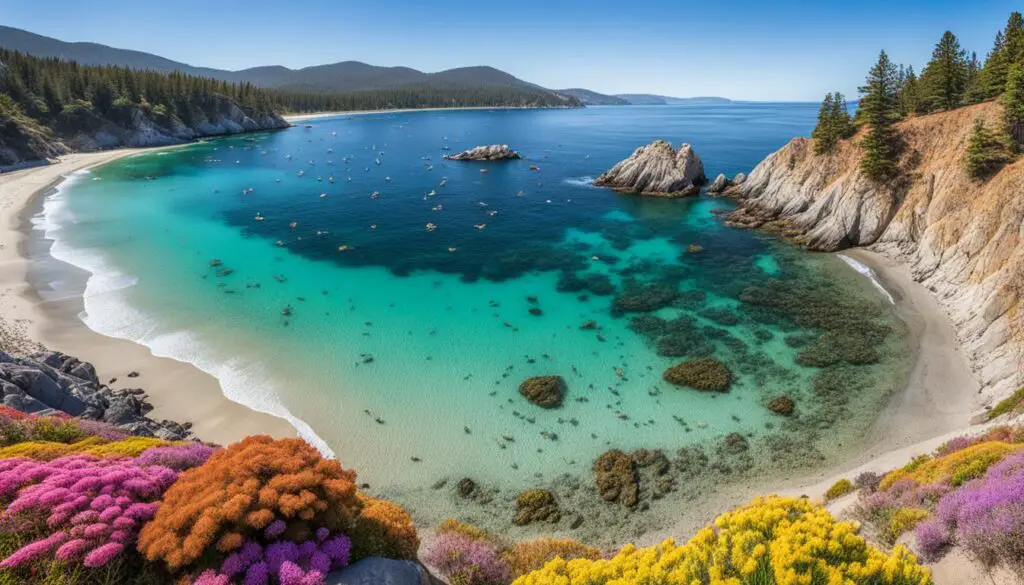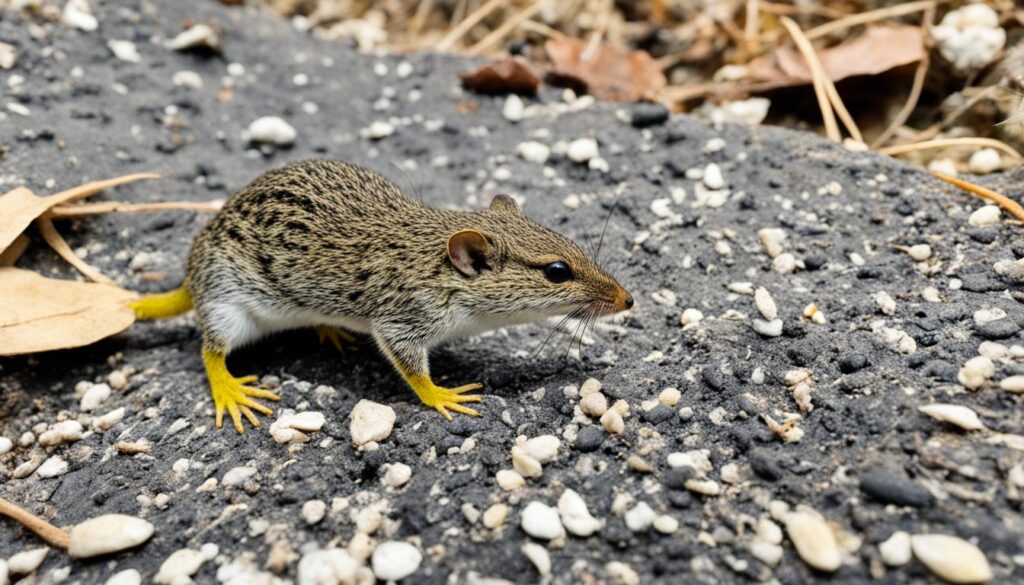Did you know that the small archipelago of Malta is home to an estimated 10,000 terrestrial and freshwater species? This tiny Mediterranean paradise boasts a rich biodiversity, making it a haven for animal enthusiasts and nature lovers alike. From endemic species to migratory birds, Malta offers a fascinating glimpse into the world of wildlife.
The Maltese Islands, comprising Malta, Gozo, and Comino, are teeming with marvelous creatures that have adapted to their unique ecosystems. With 78 endemic species found nowhere else on Earth, Malta takes immense pride in its rich natural heritage. These endemic species have caught the attention of scientists and conservationists worldwide, driving efforts to protect and preserve Malta’s unique fauna.
In this article, we delve into the astounding variety of animals that call Malta home. From mammals to reptiles, birds to insects, we explore the diverse wildlife and the conservation efforts dedicated to their well-being. Join us on this journey to uncover the secrets of Malta’s animal kingdom.

Key Takeaways:
- Malta is home to a remarkable 10,000 terrestrial and freshwater species.
- The Maltese Islands boast 78 endemic species found nowhere else on Earth.
- Conservation efforts play a vital role in protecting Malta’s unique fauna.
- The small size of Malta and its unique ecosystems make preservation crucial.
- Exploring Malta’s wildlife provides opportunities for scientific research and nature appreciation.
Endemic Plant Species in Malta
Malta is known for its diverse flora, boasting a significant number of endemic plant species that contribute to its rich biodiversity. With approximately 860 indigenous plants in the Maltese archipelago, including 20 archaeophytes introduced before 1500 AD, the Maltese Islands serve as a unique habitat for a wide array of plant life.
Among these plant species, 24 are considered endemic vascular plants, which means they can only be found in Malta. Additionally, there are 18 vascular plant species that are sub-endemic to the Mediterranean region.
Here are some examples of endemic plant species in Malta:
- Maltese Everlasting: This beautiful flower, scientifically known as Helichrysum melitense, is endemic to Malta. It features vibrant yellow petals and is commonly found in rocky habitats along the Maltese coastline.
- Hoary Rock Rose: Also known as Cistus creticus, this endemic shrub is characterized by its silver-gray leaves and pink flowers. It thrives in the Mediterranean climate of Malta and can often be seen in coastal areas.
- Maltese Pyramidal Orchid: The Ophrys melitensis, commonly referred to as the Maltese Pyramidal Orchid, is a native orchid species that is endemic to Malta. It displays a unique pyramid-shaped lip and can be found in various habitats across the island.
The protection and preservation of these endemic plant species are of utmost importance for maintaining the unique biodiversity of Malta. This is where nature reserves and protected areas play a crucial role. These designated sites ensure the conservation of the fragile ecosystems that support Malta’s endemic plants. By safeguarding their habitats, Malta can continue to celebrate and study the remarkable plant life that contributes to its natural heritage.
| Endemic Plant Species | Scientific Name |
|---|---|
| Maltese Everlasting | Helichrysum melitense |
| Hoary Rock Rose | Cistus creticus |
| Maltese Pyramidal Orchid | Ophrys melitensis |
Endemic Animal Species in Malta
Malta boasts a diverse array of endemic animal species, including mammals, birds, reptiles, and insects. These unique creatures contribute to the rich biodiversity of the Maltese Islands and are of great significance to the country’s natural heritage.
Some notable examples of endemic animal species in Malta include the Maltese Field Beetle, known for its striking iridescent colors and distinctive appearance. Another fascinating species is Schembri’s Spider Fly, named after Maltese entomologist Charles Schembri, who discovered the insect. The Maltese Wall Lizard, a reptile endemic to Malta, can be found basking in the sun on limestone walls and rocky habitats.

It is essential to safeguard these endemic species from the risk of extinction due to their limited distribution and vulnerability. The small size of the Maltese Islands makes conservation efforts particularly crucial, as unique ecosystems can be easily disrupted. Therefore, dedicated initiatives are focused on creating animal sanctuaries and protected areas to preserve both the species and their habitats.
Organizations like BirdLife Malta and Nature Trust Malta play a vital role in the conservation and protection of endemic animal species in Malta. They work to raise awareness, conduct research, and implement conservation strategies to ensure the survival and well-being of these unique creatures. These efforts are instrumental in maintaining the delicate balance of Malta’s ecosystem and preserving its natural heritage for future generations.
Endemic Animal Species in Malta
| Species | Description |
|---|---|
| Maltese Field Beetle | An iridescent beetle known for its vibrant colors and unique appearance. |
| Schembri’s Spider Fly | A rare fly species discovered by Charles Schembri, which exhibits fascinating behavior and characteristics. |
| Maltese Wall Lizard | A reptile species found in rocky habitats and known for its adaptability and distinctive coloration. |
Conservation and Preservation Efforts in Malta
Malta has demonstrated significant dedication to the conservation and preservation of its diverse biodiversity and wildlife. Efforts have been made to designate over 20% of the total land area in Malta as protected areas, including the establishment of two national parks.
Ghadira National Reserve
Ghadira National Reserve, the first national park in Malta, serves as a critical habitat for various bird species and is teeming with abundant biodiversity. This reserve plays a crucial role in maintaining the ecological balance and protecting the unique flora and fauna found in Malta.
Is-Simar
The second national park, Is-Simar, is a fertile agricultural valley that serves as a natural haven for a diverse range of breeding, wintering, and passage birds. The park provides essential habitats and supports the sustainability of numerous animal species in Malta.
The protected areas and nature reserves in Malta are internationally recognized as important bird areas, highlighting the significance of these habitats in preserving both local and migratory bird populations. Organizations like BirdLife Malta and Nature Trust Malta play a pivotal role in monitoring and safeguarding the wildlife and habitats across the country.

Sustainable tourism practices and eco-tourism initiatives further contribute to the appreciation and conservation of Malta’s natural heritage. The promotion of responsible tourism allows visitors to engage with the local ecosystem while minimizing negative impacts on the environment. Through these efforts, Malta continues to prioritize the protection and sustainability of its unique wildlife and natural resources.
Conclusion
Malta’s rich biodiversity and unique ecosystems make it a haven for endemic plant and animal species. With approximately 78 endemic species, Malta holds a special place in the conservation and preservation of these unique treasures. The protection of these endemic plants and animals is crucial to maintaining the country’s natural heritage and promoting scientific research.
The Maltese Islands boast a remarkable number of endemic plant species, including the Maltese Everlasting, Hoary Rock Rose, and Maltese Pyramidal Orchid. These plants contribute to the rich tapestry of Malta’s flora and are protected within nature reserves and designated areas. These protected areas serve as vital habitats for these endemic plants and support the ongoing efforts to preserve Malta’s unique biodiversity.
Malta is also home to a variety of endemic animal species, such as the Maltese Field Beetle, Schembri’s Spider Fly, and Maltese Wall Lizard. The conservation of these species is of paramount importance, given Malta’s small size and the fragility of its ecosystems. Organizations like BirdLife Malta and Nature Trust Malta are actively involved in preserving the habitats and protecting these endemic animals from extinction.
Through its commitment to conservation and preservation efforts, Malta has designated over 20% of its land as protected areas, including two national parks. Ghadira National Reserve and Is-Simar provide crucial habitats for a diverse range of wildlife, contributing to the country’s international recognition as an important bird area. By practicing sustainable tourism and promoting eco-friendly initiatives, Malta seeks to raise awareness and appreciation for its natural heritage.
